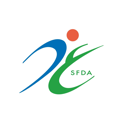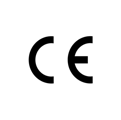Face Mask N95
This respirator helps protect against certain particulate contaminants but does not eliminate exposure to or the risk of contracting any disease or infection
This respirator helps protect against certain particulate contaminants but does not eliminate exposure to or the risk of contracting any disease or infection. Misuse may result in sickness or death. For proper use, see supervisor, or User Instructions, or call 3M in U.S.A., 1-800-247-3941. In Canada, call Technical Service at 1-800-267-4414.
IMPORTANT Before use, the wearer must read and understand these User Instructions. Keep these instructions for reference. DESCRIPTION The 3M™ 1860 Health Care Particulate Respirator and Surgical Mask is designed to help provide respiratory protection for the wearer. This product has a filter efficiency level of 95% or greater against particulate aerosols free of oil1 . It is fluid resistant, disposable and may be worn in surgery. It can fit a wide range of face sizes. This product contains no components made from natural rubber latex. INTENDED USE: This product meets CDC guidelines for Mycobacterium tuberculosis exposure control. As a respirator, it is intended to reduce wearer exposure to certain airborne particles in a size range of 0.1 to >10.0 microns, including those generated by electrocautery, laser surgery, and other powered medical instruments. As a surgical mask, it is designed to be fluid resistant to splash and spatter of blood and other infectious materials; when worn properly and in combination with protective eyewear, it complies with the OSHA Bloodborne Pathogens Standard. It also provides >99% BFE2 against wearer generated micro-organisms. CONTRAINDICATIONS: Not for industrial use. Not for use with beards or other facial hair that prevents direct contact between the face and the sealing surface of the respirator. OSHA has not set a permissible exposure level for airborne biohazards. USE INSTRUCTIONS: 1. Before use for respiratory protection, a written respiratory protection program must be implemented meeting all requirements of OSHA 29 CFR 1910.139 and/or 1910.134 such as medical evaluation, training and fit testing. In Canada, CSA standard Z94.4 requirements must be met. The 3M saccharin (sweet) or Bitrix™ (bitter)qualitative fit test is recommended for this respirator. When used only as a surgical mask, fit testing is not required. 2. Respirator may be used until damaged, breathing becomes difficult, or contaminated with blood or body fluids. Otherwise, it may be stored and reused according to the facility’s infection control policy. 3. Filtering facepieces are to be inspected prior to each use to assure there are no holes in the breathing zone other than the punctures around staples and no damage has occurred. Enlarged holes resulting from ripped or torn filter material around staple punctures are considered damage. Immediately replace respirator if damaged. Staple perforations do not affect NIOSH approval. 4. Discard after every use when used for surgical procedures.
Fitting Instructions (Must be followed each time respirator is worn) Fig. 1 Fig. 2 Fig. 3 Fig. 4 1. Cup the respirator in your hand, with the nosepiece at your fingertips, allowing the headbands to hang freely below your hand. 2. Position the respirator under your chin with the nosepiece up. Pull the top strap over your head resting it high at the top back of your head. Pull the bottom strap over your head and position it around the neck below the ears. 3. Place your fingertips from both hands at the top of the metal nosepiece. Using two hands, mold the nose area to the shape of your nose by pushing inward while moving your fingertips down both sides of the nosepiece. ! Pinching the nosepiece using one hand may result in improper fit and less effective respirator performance. Use two hands. 4. Perform a User Seal Check prior to each wearing. To check the respirator-to-face seal, place both hands completely over the respirator and exhale. Be careful not to disturb the position of the respirator. If air leaks around nose, readjust the nosepiece as described in step 3. If air leaks at the respirator edges, work the straps back along the sides of your head. If you CANNOT achieve proper seal, DO NOT enter the isolation or treatment area. See your supervisor. Removal Instructions See step 2 of Fitting Instructions and cup respirator in hand to maintain position on face. Pull bottom strap over head. Still holding respirator in position, pull top strap over head and remove respirator.
Uses This respirator helps protect against certain particulate contaminants but does not eliminate exposure to or the risk of contracting any disease or infection| Country of Manufacture | United States |
|---|---|
| Certificates | Saudi FDA, FDA, CE |
Material |
N/A |
| Ink color | N/A |
Absorption |
N/A |
Sterilization |
No |
End user package |
20 Pcse/ Box |
Shelf life |
N/A |
Extra options |
N/A |









